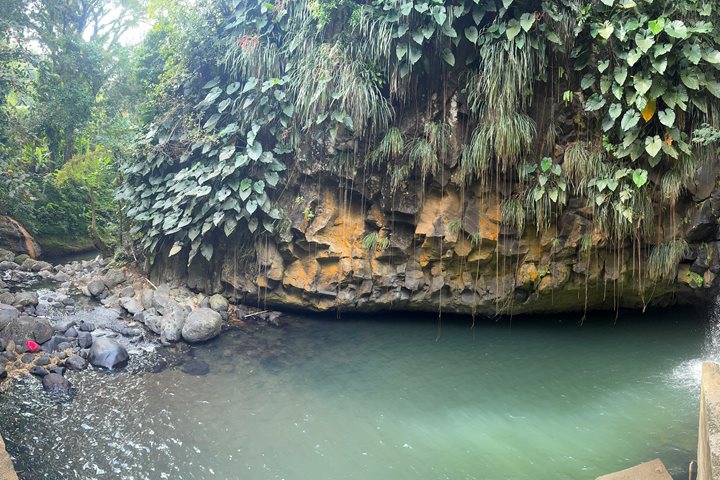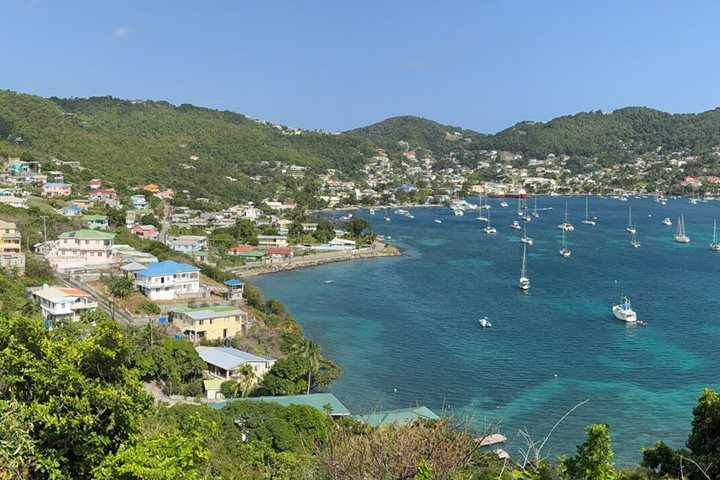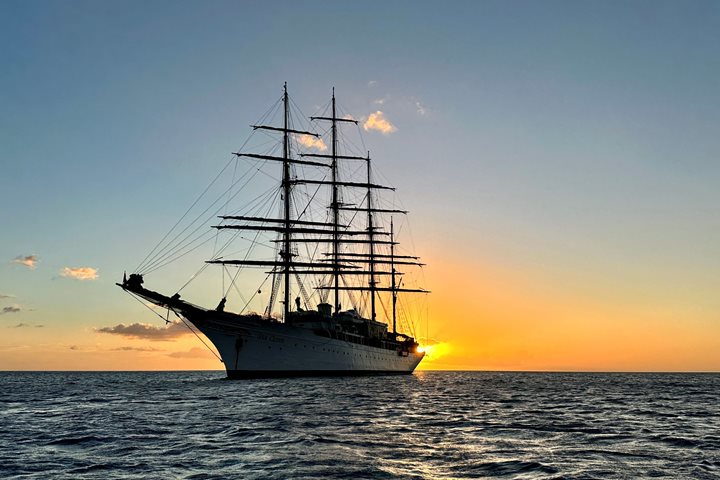At 6:33 a.m. the sun rose over Morne Diablotin (“Devil Mountain” in French Creole but the indigenous Amer-Indians called it Waitikubuli meaning “the woman whose body is so long”). The sky was a brilliant iris blue with cotton-like cumulus clouds hanging below the mountain peak. During the night Sea Cloud made from 7.2 to 9 knots over water. We had some variable winds from a gentle 3 knots to 25 knots and yet—as was apparent from breakfast—apparently everyone slept soundly and was raring to go. Dominica is at 15.34.7 latitude and is justifiably called the “Nature Isle” as despite the devastation of the category 5 hurricane that was centered here in September 2017, the foliage is quickly growing back.
We boarded tenders at 8:30 a.m. and motored across Prince Rupert Bay to the Cabrits Pier where we boarded mini-buses for our ride to the rain forest on the slopes of Morne Diabolotin, which at 4,775 feet is the highest mountain on the island. We passed small farm plots of coffee, citrus, 12 species of bananas, coffee, yams, dasheen (a type of taro), and corn. The roadside was filled with cotton, hibiscus and poinsettia trees. Yes, here the poinsettia grows as tall as 20 feet!
Arriving at our destination, we broke into three groups of 20 and entered the rain forest where we spent the morning learning about the enormous variety of tree and plant species. We were very fortunate as one advantage of the hurricane—indeed if it can be called an advantage—is that with the tree canopy gone, we were able to observe the indigenous parrots, the sisserou and the jaco. My group saw approximately six and as there are only about 1500 breeding pairs left in the world that is significant.
After lunch we visited the historic Fort Shirley. This British fort was constructed in 1770 after the design of the prominent Colonial American architect Peter Harrison. At its zenith it had a garrison of 700 soldiers and a regiment of Afro-Caribbeans known as the 8th West India Regiment. The garrison was abandoned in the 1850s and was utterly taken over by the jungle. Strangler figs broke down the walls, trees grew through the roofs of the building, and in short you could not even see the fort. It had become part of nature. In 1982, an old friend, Dr. Lennox Honeychurch, a trained Oxford Ph.D historian and a local Dominican, decided to take it upon himself to reclaim the fort from the jungle. Lennox has been working for almost 40 years and has massively restored sections of the fort.
After our visit we all enjoyed a swim on the Purple Turtle Beach before boarding Zodiacs back to Sea Cloud for a splendid dinner on the Lido Deck under a beautiful sky. Then Robin gave a beautifully illustrated presentation. Tomorrow on to Ile des Saints, a department of France.









